FALL MIGRATION
Like the spring, fall migration is usually a pretty interesting time of year, with lots of new birds, and maybe a few surprises to look forward to. The early part of the season was a bit lackluster, with shorebird and hawk migration falling a little flat.
Most years the fall migration kicks off in mid summer when the first shorebirds arrive from their nesting grounds farther north. I'm usually not in "migration mode" that early and still working on the resident birds until the end of August. This year was a bit strange, though, because there were very few of the expected terns gathering along the Connecticut shoreline. While looking for Roseate Terns, which I usually see by July, I noticed that it was hard to find any terns in the southeastern part of the state at the end of the summer.
Turning to other subjects, it was a good season for the many herons and egrets staging in local salt marshes. These aren't the most exciting subjects for me, but they are plentiful and can be fun to watch as they show off their various fishing techniques. At Rocky Neck, a young Green Heron used a stealthy approach, stalking its prey.
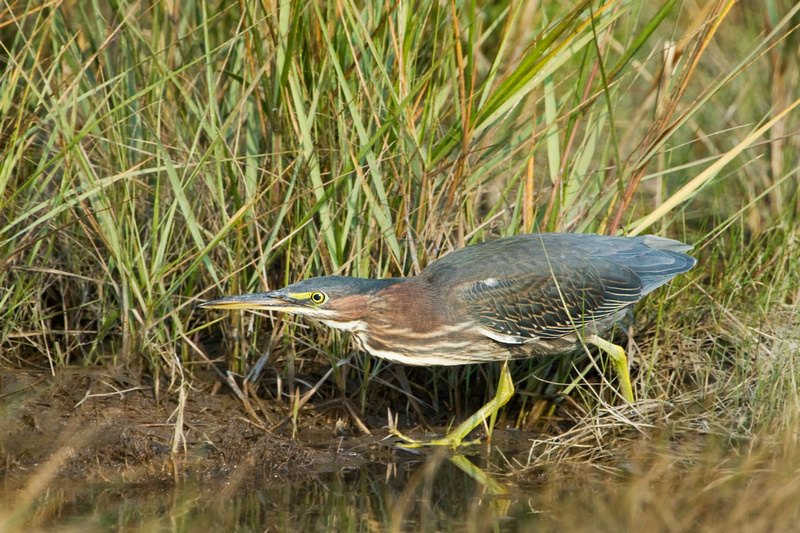

Great Egrets congregated in tight groups around productive pools in the Hammonasset salt marshes, spearing small fish in the flooded Spartina grass.
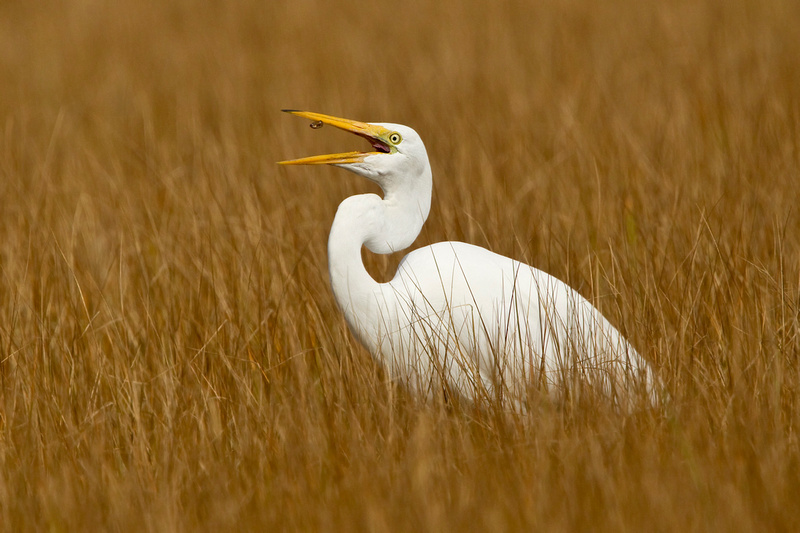

Occasionally, the close quarters led to noisy outbursts as dominant birds battled for elbow room in the best locations.
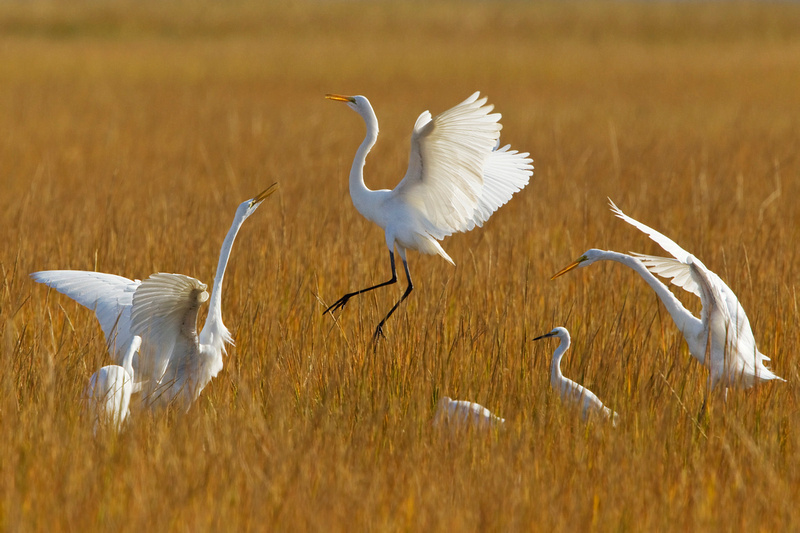

Immature Little Blue Herons usually joined them in the golden grass.
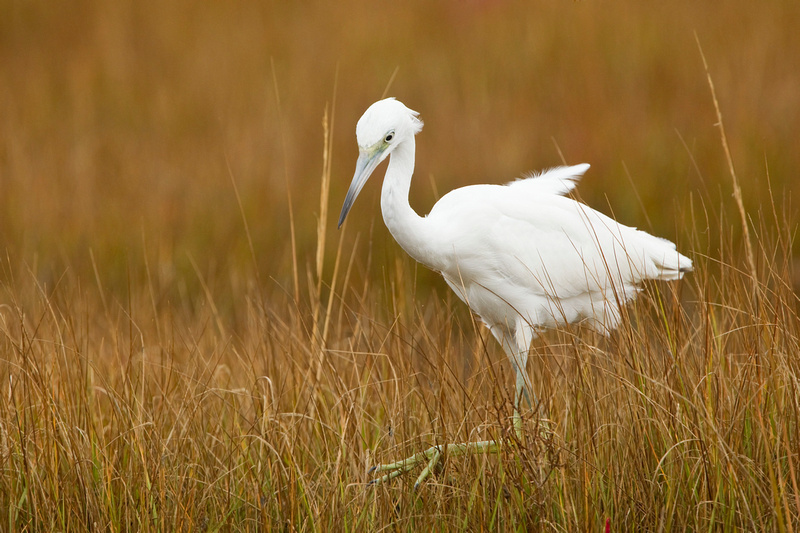

In Old Lyme, a Snowy Egret used a technique I have never seen before. Standing motionless in the shallow water, it seemed to be blowing bubbles or disturbing the surface of the water with its bill. It stayed in this position for more than ten minutes, stabbing into the water twice in the time I watched it, coming up with a small fish on both tries. I'm not sure if the tactic was designed to attract fish to the egret or to obscure the water surface so fish could not see the danger above. Either way, this patient method seemed far less productive than the more active stalking I'm used to seeing them do.
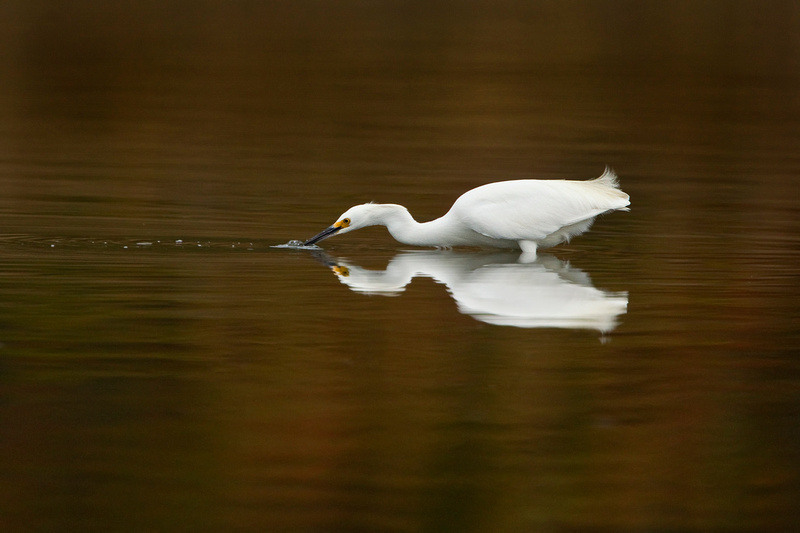

Much was made of the DEEP filling in the potholes in the parking areas at Hammonasset Beach State Park this summer. These holes would fill with rain water and attract shorebirds in fall migration. Well, rain was so scarce the past few months that there were very few puddles to be had, anyway. Shorebirds still pass through Connecticut, but the puddles create easily accessible spots to view and photograph the birds. Without the puddles, birds stay farther out in the marshes, often hidden in the grass. Because of this, I saw and photographed fewer shorebirds this fall than in the past few years. Ironically, my best shorebird sighting of the fall was an Upland Sandpiper at Hammonasset that I photographed standing in one of the hydro seeded "filled in" areas.
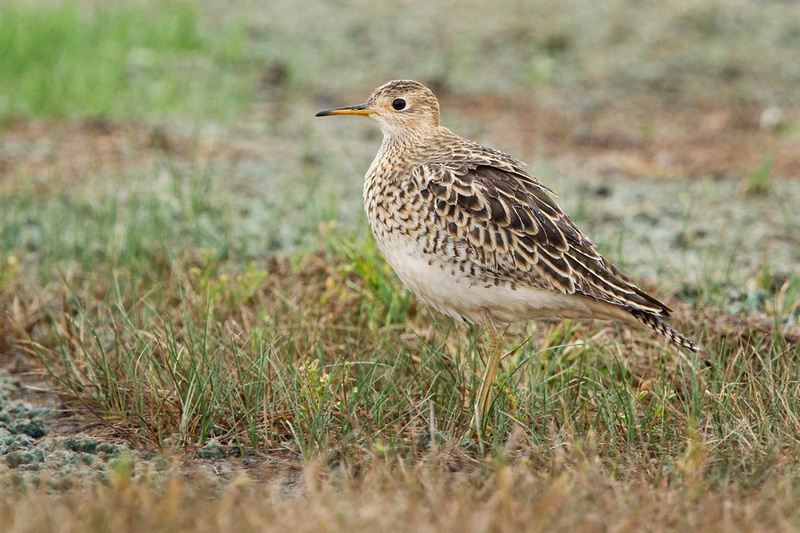

The same evening, there was a Short-billed Dowitcher in a tiny puddle a short distance from the Upland Sandpiper at the bottom of the Nature Center parking area.


As the few puddles quickly dried up, the shorebirds were noticeably fewer (except for the dozens of Killdeer), although a couple American Golden Plovers stayed a few day feeding in the grass parking lots. This sharp looking juvenile seemed very tame, and as a friend and I lay on the ground photographing it one afternoon, it walked past us so close that we couldn't even focus on it.


It turns out there was a plentiful food source in the grass that the plover was feasting on. Grubs.
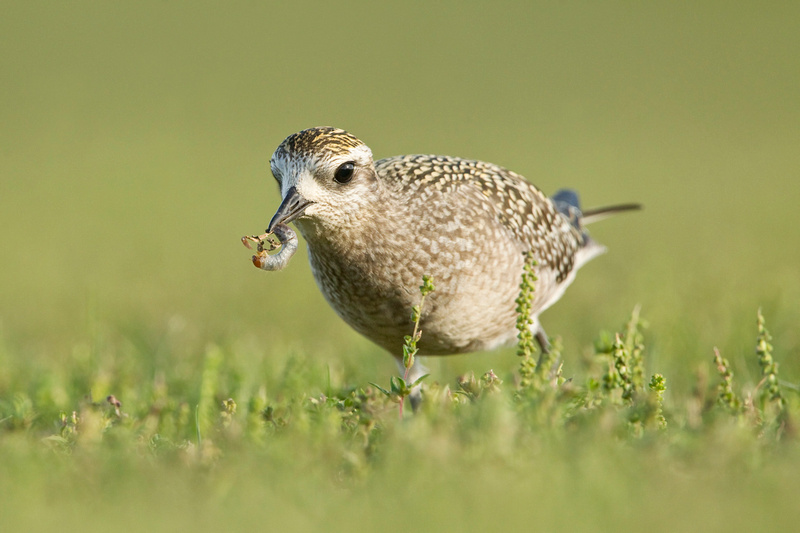

This plover stayed in the same area for a couple days, gorging itself on the plentiful bug banquet. American Golden Plovers breed in the high arctic and winter in central and southern South America. For a bird with one of the longest distance migrations, it's vitally important that they find these productive refueling stops along the way.
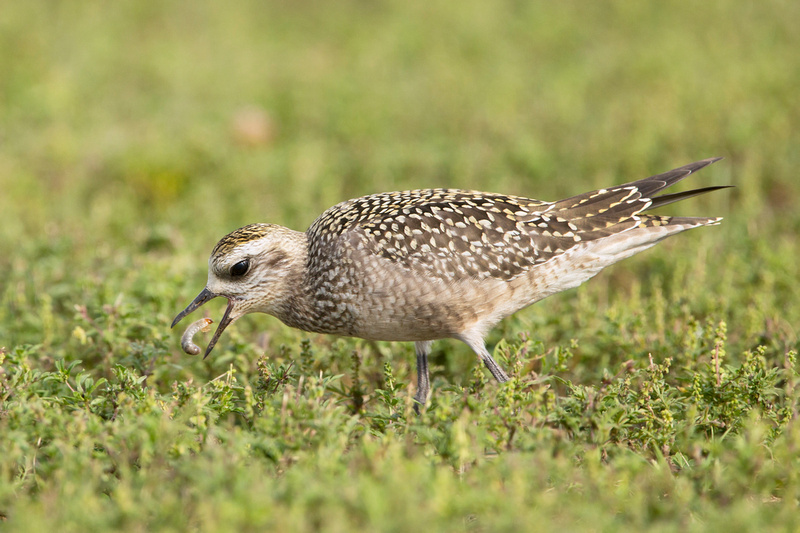

A week later an adult American Golden Plover stopped over for a couple days, this time in the west end of Hammonasset.


Despite the lack of rain, it turned out that a decent variety of shorebirds could be found feeding in the dry grass lots at Hammo, including Pectoral Sandpipers.
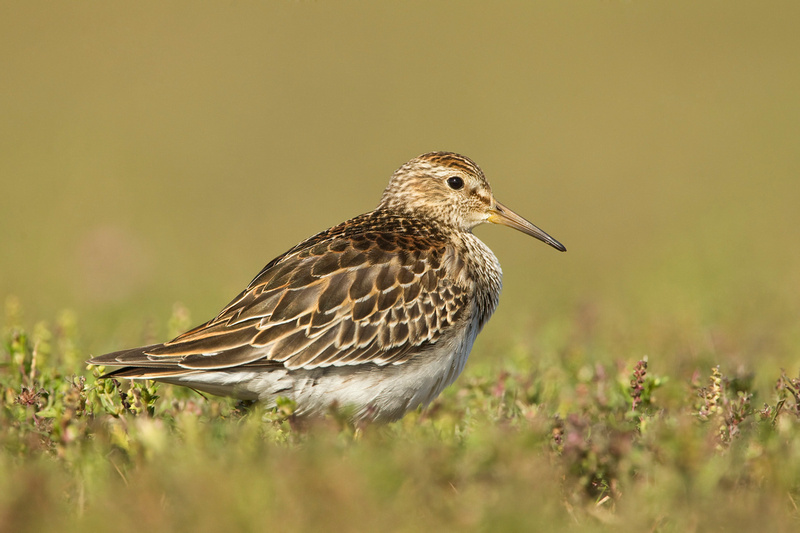

A juvenile (at left) and an adult White-rumped Sandpiper fed in the same area one day, allowing for easy comparative photos.


In tidal pools and pannes, the typical peeps and yellowlegs were plentiful .....
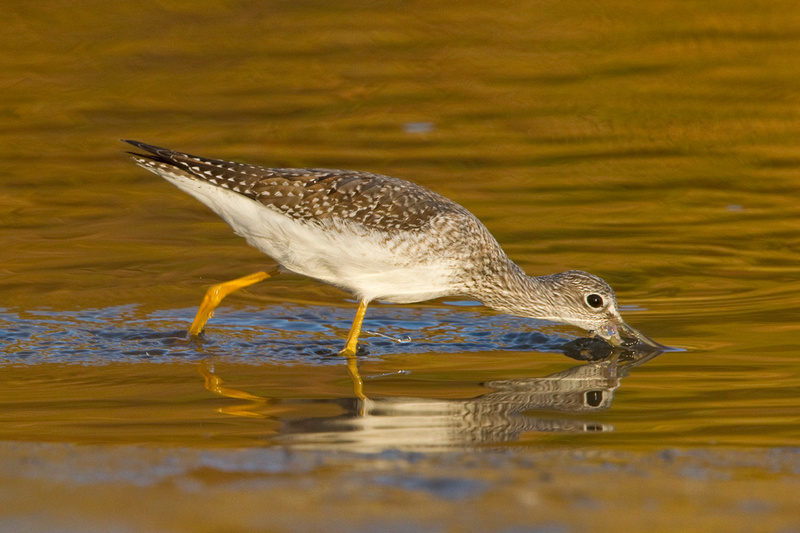

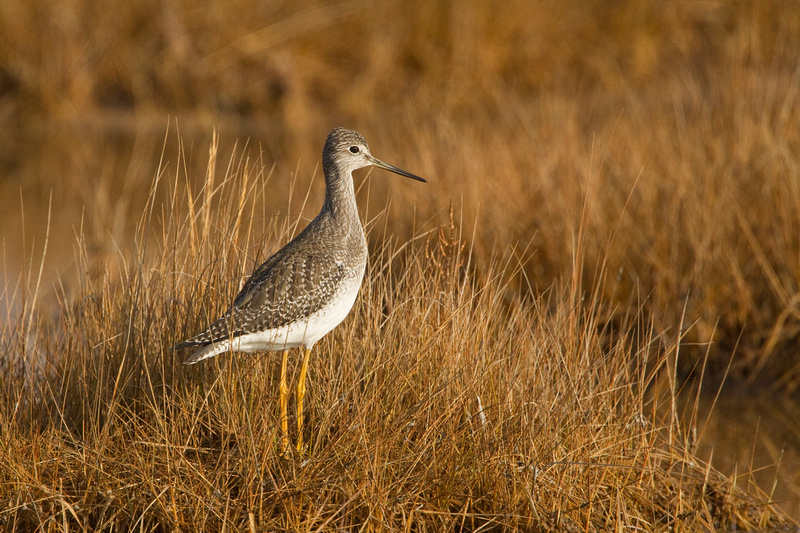

...... but despite searching for it for two days, I missed seeing the Wilson's Phalarope that was hanging out with the yellowlegs at Hammonasset in September.
Hawk watchers in Connecticut have described the raptor migration this year as disappointing, too, at least through mid-October. The lower numbers, I assume, are the result of fewer than normal cold fronts that produce good hawk flights. I've seen all the common migrants this fall, Kestrels, Merlins and Peregrine Falcons and Sharp-shinned and Coopers Hawks, but no unusual sightings. Getting pictures of hawks is always a challenge, but Cooper's Hawks put on a show this fall. The one below was chasing sparrows through the tall weeds at Bauer Park, and after coming up empty, popped up close by me to look for another potential meal.
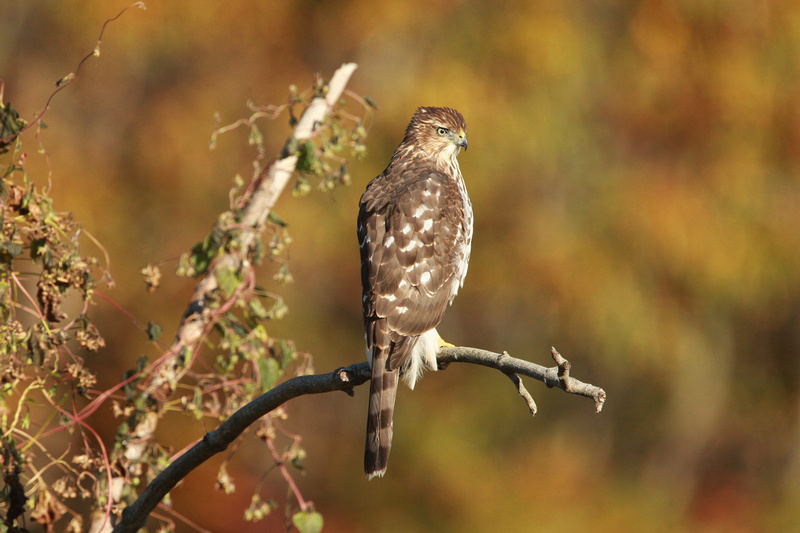

One day at Hammonasset, there were at least three immature Coopers Hawks flying around the west end, playfully jousting with each other and a dozen or so crows. They seemed oblivious of the small group of birders and photographers gathered around to watch them play.
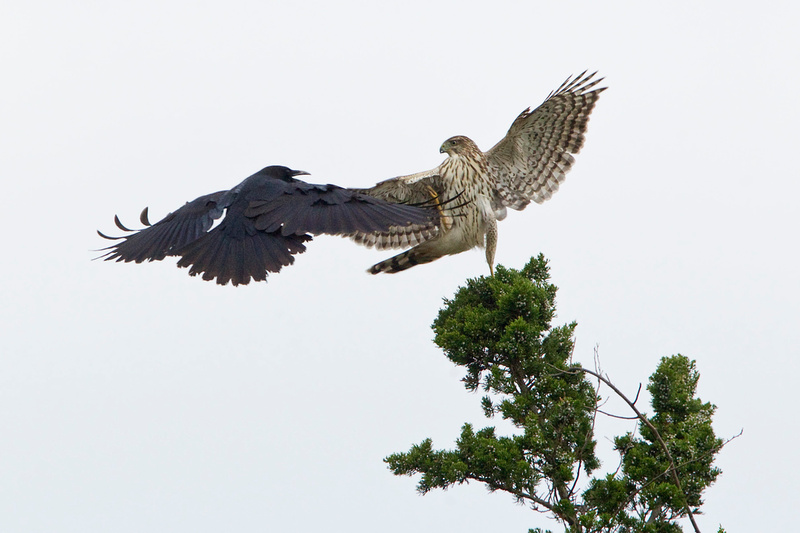

Unfortunately, the beautiful morning light vanished as the sun disappeared behind clouds just in time to put a damper (at least from a visual perspective) on the frolic.


I mentioned in my previous post that I didn't spend any time photographing migrating warblers at Bluff Point State Park this fall, and missed a lot of the warblers I usually see there. This year I tried some different locations for songbirds, seeing a much smaller variety of migrant warblers, but plenty of the common ones, especially Palms and Yellow-rumps.
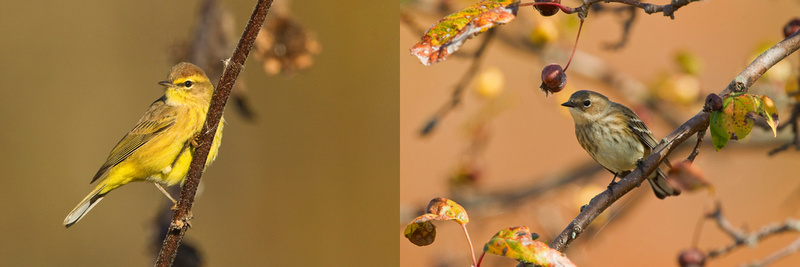

Kinglets, both kinds, have been plentiful this fall, too. Golden-crowned Kinglets often feed by working through the outer branches of cedar trees and often will allow very close approach as they appear totally focused on their task. Despite this, the tiny, fast moving birds are difficult to get good pictures of as they flit from branch to branch, often leaving me with shots of blurry feet and tail feathers exiting the frame. Finally, this year I got a cooperative kinglet. After catching a (relatively) large moth, this Golden-crowned Kinglet moved to an open branch and spent at least a couple minutes in the same spot, working to dispatch it. My favorite picture shows the hairs and dust flying as the bird shook the moth violently to dislodge the wings.
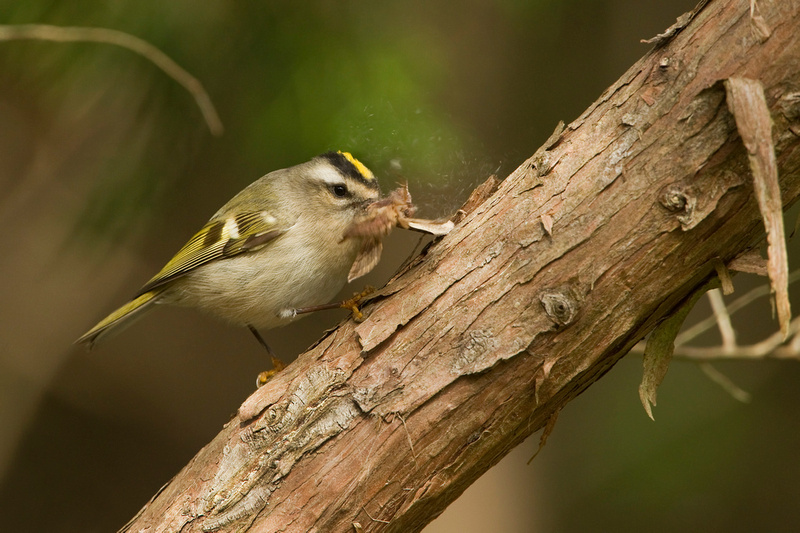

I spent a lot of time this fall working in open and brushy areas. At Harkness Park I got a distant look at a molting Indigo Bunting and was able to see the Blue Grosbeak reported at Bauer Park on a couple different occasions.


Finding the grosbeak, at times, could be quite a challenge, as it fed in the tall weeds. This shot shows how well it blended in with the surroundings.


As October arrived I began to concentrate on the many species of sparrows in transit through the state, some on their way farther south, others arriving to spend the winter. These LBJ's (little brown jobs) are often overlooked (at least by me) so I decided to concentrate on them for a while this fall. It helped that some of the less common ones were being reported from areas close by, including Grasshopper, Lincoln's and Vesper Sparrows form Bauer Park, all of which I was able to find there. Despite carefully studying scores of Chipping Sparrows, I never turned up a Clay-colored. Below is a sample of the different sparrows I was able to see this fall.
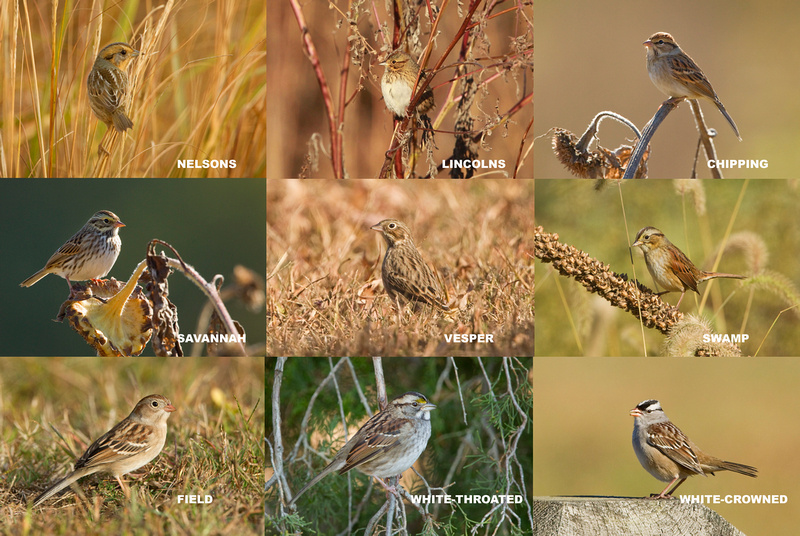

The best sighting I've seen so far this fall was a handsome Lark Sparrow found by a birder in the Hammonasset camp ground. It was feeding in the open grass, in the company of a mixed flock of sparrows, including White-throated, White-crowned, Field, Song, Swamp, and a Vesper.
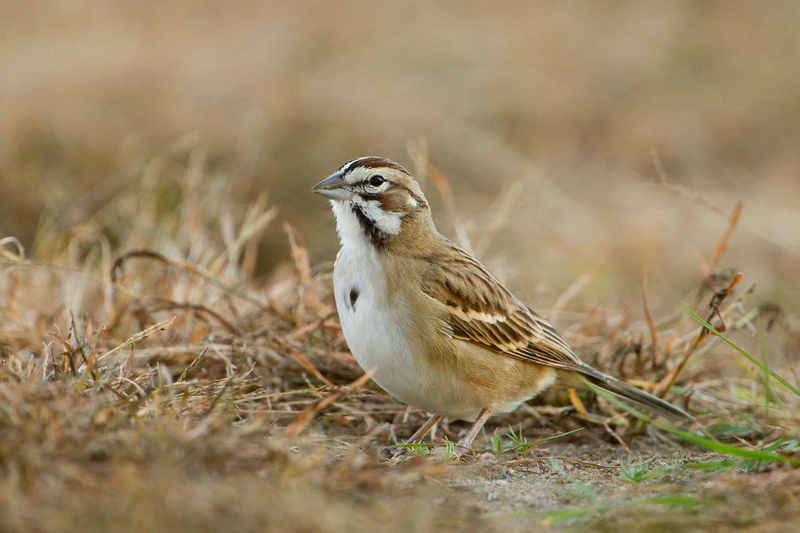

This mainly western species in a great example of the surprises that can show up in Connecticut during fall migration, and what makes it such an exciting time of year. Here's hoping there are a few more surprises to be found before the fall winds down.